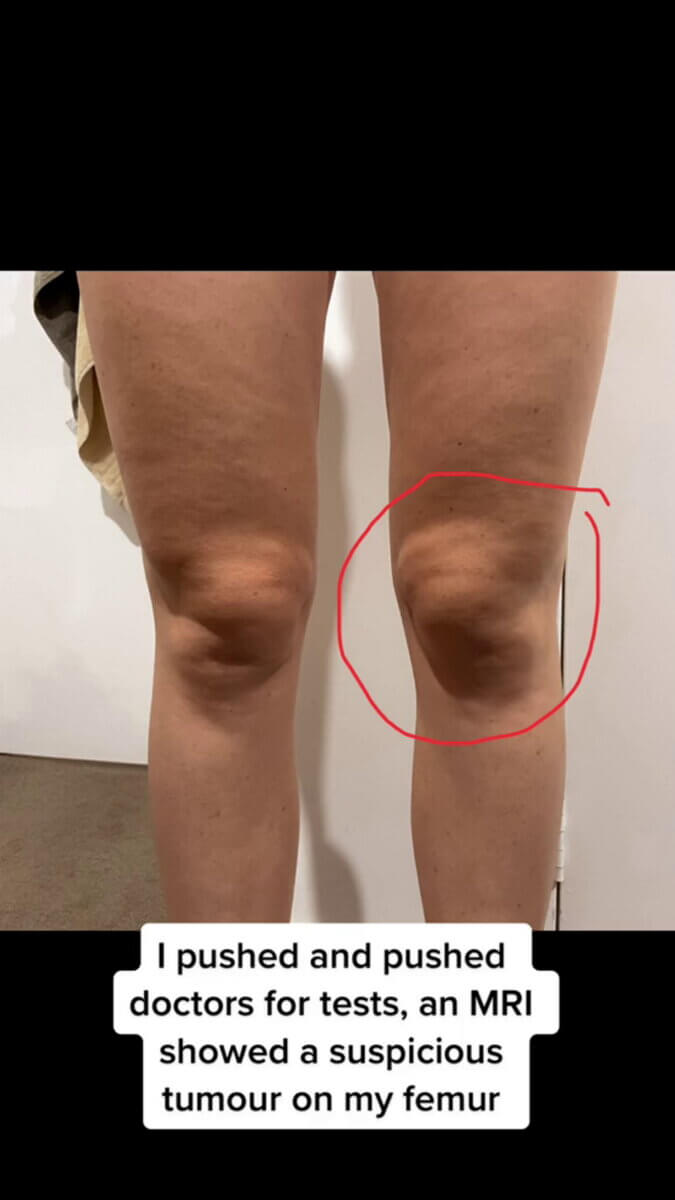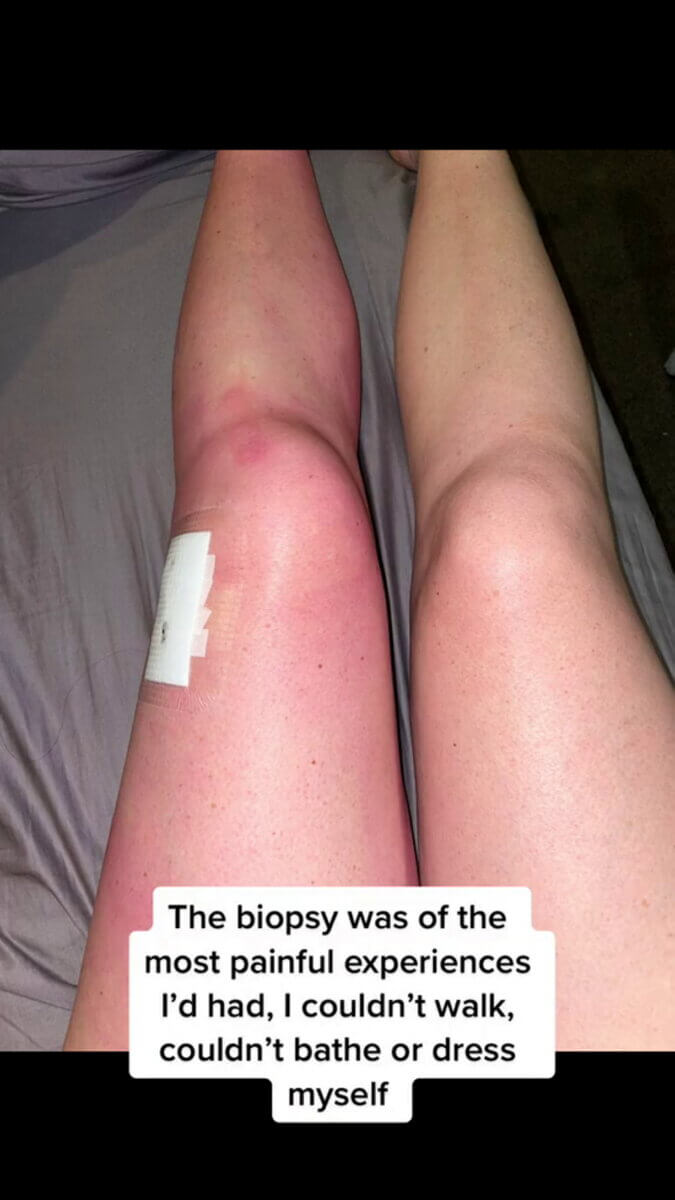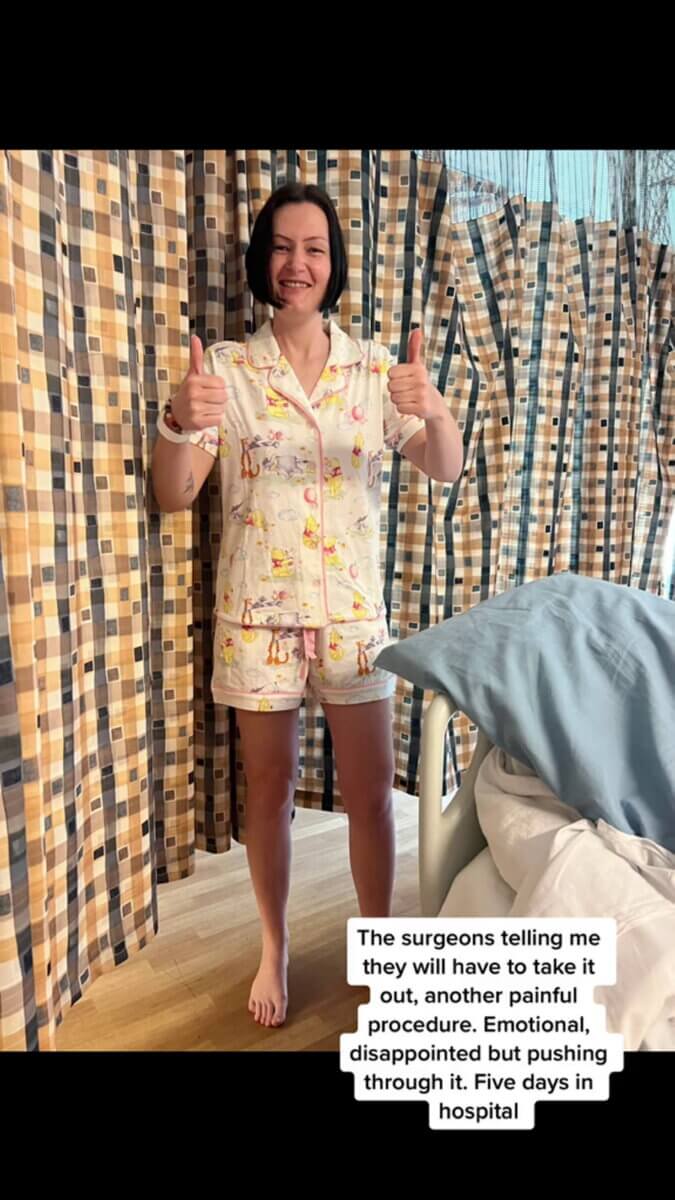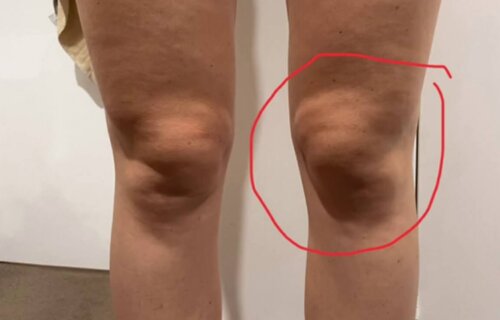AUCKLAND, New Zealand — A regular gymgoer, Amy Haigh, was shocked to discover that her persistent knee soreness was actually due to aggressive bone cancer. Despite living a fit and healthy lifestyle, Amy’s world dramatically changed in July 2022.
For six months, Amy had been coping with knee pain, which she initially assumed was a sports-related injury. However, a consultation with a doctor revealed a disturbing truth: she had a tumor at the end of her femur, close to the knee joint.
Previously working as an early childhood educator, Amy was diagnosed with osteosarcoma, a type of bone cancer, in her left knee. She had to endure an extensive surgery to remove the cancerous bone, followed by three rounds of chemotherapy.
“I thought that it was a sports injury originally,” the 27-year-old says in an online video. “I had visited two physiotherapists, a chiropractor, and an osteopath and was following their instructions and doing exercises but my leg wasn’t improving.”
In June, as Amy prepared for a swimsuit competition, the pain started to get worse and her knee swelled up.
“I had a dull ache I couldn’t get rid of. I had one session with a personal trainer who told me to get an MRI. I was in the gym five days a week and hoped to participate in a bikini competition as I was really passionate about weightlifting. I felt I couldn’t progress until my leg was sorted.”

The following month she had an X-ray and was referred to an orthopedic surgeon who ended up declining her referral and she had to be referred a second time.
“This person for some reason declined my referral – despite there being a deformity of my bone in the X-ray,”
“I was referred to another orthopedic surgeon who sent me for an X-ray of my hips and an ultrasound of my left knee. Both were fine,” Haigh continues. “He then sent me for the MRI I had been asking for, which showed a clear abnormality on my left distal femur.”
Amy was officially diagnosed in October 2022 after a number of surgical procedures confirmed the cancer.
“I was sent for a second MRI and CT scan, but a few days later I was sent for a biopsy where they put me under, cut my leg open and drilled into the bone to take a sample,” Haigh explains. “It was confirmed two weeks exactly after that that I had cancer. I started chemo a week after that. I’m glad I listened to my instincts and kept pushing for answers. I also feel lucky that I am so in tune with my body and knew that something wasn’t right.”

In January, Haigh had surgery to remove the cancerous part of the femur. The surgery took around eight hours and surgeons removed part of the bone that was cancerous. It was replaced with a donor’s bone from the United States. Now, one plate and 11 screws hold that part of her leg together. During the surgery, Amy lost two liters of blood and had to stay in the hospital for eight days, but the surgery was successful.
“I’ve been very up and down. The big surgery was very difficult,” Amy says in her video. “The first surgery was hard in itself. I went from being in the gym five days a week, horse riding, walking my dogs, working with children to suddenly not being able to do any of that.”
“I had to go on crutches after my biopsy which made work very hard. I hadn’t been at my job very long and they were not very supportive. They were very cruel which added another layer to my stress. I never returned there to work since my diagnosis.”

During the three rounds of chemo, Amy says she became incredibly weak as her immune system and body began to feel the effects of the radiation.
“I was vomiting, sleeping all the time and being so weak I could hardly lift my head off the couch. I lost my hair due to the very strong chemotherapy drugs they had me on. That was a horrendous and very traumatic experience, something I may never be over – even once my hair comes back to its original length. I was such an independent, carefree and spirited person who suddenly couldn’t do anything for herself. My partner had to help me shower and dress after my operations. I had to rely on others for food and water as I couldn’t get these things for myself,” the 27-year-old recalls.
“My chemo cycles were 35 days long and also involved a two-week stay in Auckland Hospital. I found this time in the hospital very isolating. My family and friends made sure I had a visitor every day, but I still struggled, I would sob every time I was dropped off.”
“My second surgery [to remove the tumor] involved an eight-day stay in Middlemore Hospital. My operation went well and I woke up from it really well. They weren’t sure if I was going to have to be in the high dependency ward afterwards but luckily I was okay.”

In March 2023, Amy announced that after seeing doctors and oncologists she was cancer free. Since starting her recovery from the cancer and chemotherapy, it hasn’t been smooth sailing. Amy has been struggling to get by after a single insurance payout she needed didn’t come through.
In 2015, she went to the doctor because she had a lump on her neck, which turned out to be a swollen gland. When applying for a mortgage she had to get life insurance and because of this lump she had to sign a contract that stipulated she would not be covered for cancer.
Amy had to get it seen again and claimed doctors said everything was fine with the lump and the clause should have been removed from the contract. Not expecting to get cancer as a fit and healthy young woman, she is now struggling financially after spending her life savings and borrowing money from family.
She says the whole insurance fiasco on top of her recovery from cancer has severely affected her mental health. Amy has since had to set up a page to crowdsource donations from friends, family and people online just to get by.
What is osteosarcoma?
Osteosarcoma is a type of cancer that produces immature bone. It is the most common type of cancer that arises in bones, and it is usually found at the end of long bones, often around the knee. Most people diagnosed with osteosarcoma are under the age of 25, and it is more common in males than females.
Although osteosarcoma tends to occur in larger bones, such as the femur, tibia, or humerus, it can occur in any bone. The cancer cells in osteosarcoma are typically very abnormal and multiply rapidly.
Common symptoms of osteosarcoma may include bone pain (which may increase with activity and might be worse at night), swelling and redness around the affected area, and decreased joint mobility. In some cases, fractures might occur at the site of the tumor due to the weakening of the bone.
The treatment plan for osteosarcoma typically involves a combination of therapies, such as surgery to remove the tumor, chemotherapy to kill cancer cells, and sometimes radiation therapy. The specifics of the treatment depend on several factors including the size, location, and stage of the cancer, as well as the patient’s overall health.
South West News Service writer Barney Riley contributed to this report.
See Amy Haigh’s full story here:

